Wholesale pricing strategies are a crucial part of marketing. Businesses selling bulk products need to effectively select the ideal pricing strategies that will enable them to grow and expand in the long term. Always remember that how you price your products and services can determine if your wholesale business will stay open or flop due to low returns and possible bankruptcy.
As one of the biggest challenges for any business is choosing what type of wholesale pricing strategy to use, we made a list that can help you decide. Carefully read each item and see if it will complement your business.
Types Of Wholesale Pricing Strategies
Wholesale marketing offers a wide range of wholesale pricing strategies you can apply to grow your business. In this guide, we’ll break down and explain each type to help you decide which wholesale pricing strategies align best with your goals.
1. Demand pricing
Many refer to demand pricing as demand-based pricing, since it’s based on what customers are willing to pay. It is one of the wholesale pricing strategies that use consumer demand for a product or service as the main element of setting their price.
Consumer demand, driven by the perceived value of a product or service, directly influences demand-based pricing. This approach includes strategies like price skimming, price point, bundle pricing, penetration pricing, and other effective wholesale pricing strategies.
The prices of products or services can increase due to bad weather, festive periods, or natural disasters, leading to destruction. The price of a product or service increases as there is a likelihood that the price will also increase.
If you want to learn more about demand pricing, you may read about: What Is Demand Pricing? (Everything You Need To Know).
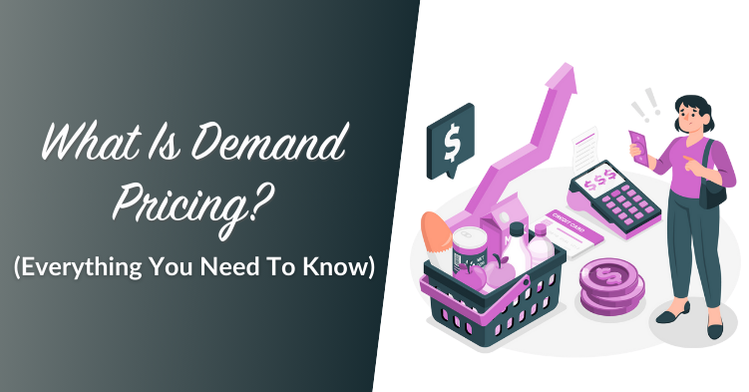
2. Competitive pricing
Competitive pricing, also known as strategic pricing, is a wholesale pricing strategy that sets your prices based on what your direct competitors charge. Unlike cost-plus or value-based pricing, which rely on factors like production costs or customer demand, competitive pricing focuses on staying aligned with market rates to stay attractive and relevant.
In setting the price, store owners either offer it above the competition, at the competition, or below their competitors.
Businesses that set their price above their competitors use a premium environment to justify the higher cost. On the other hand, wholesale vendors that opt for the same price as their rivals distinguish themselves from others through various marketing strategies.
Finally, those who set lower prices believe that added purchases from their other products can compensate for the minimal gain they had with the low-priced item.
3. Cost-plus pricing
Cost-plus pricing, also known as markup pricing, involves adding a fixed percentage on top of the production cost to determine the final price.
When setting the cost-plus price, you take the cost of the raw materials and the cost of production and add them to the overhead costs of a product or service.
You add a markup percentage, or your desired profit margin, to the total production cost. The result is your cost-plus price. Remember, as long as all the costs and sales have been accurately calculated, you will always run at a profit.
4. Penetration pricing
Penetration pricing uses low prices to enter a new market or to launch a new product or service. Businesses use this strategy to attract customers and encourage them to choose a specific product or service.
It also serves as a deterrent to the competition to prevent them from entering the market with a similar product because they will have to lower their prices lower.
Once you’ve built a loyal customer base, you can gradually increase your prices to a more moderate level as part of a long-term strategy.
5. Price skimming
Price skimming is one of the wholesale pricing strategies wherein businesses initially offer a high-priced product to gain the most revenue. With this, they receive an immediate return on production costs and earn more before competitors come in.
Businesses lower prices as soon as they satisfy early buyers, and new competitors enter the market. This approach helps them attract price-conscious customers. Many use this wholesale pricing strategy when launching a new product. After earning early profits, they reduce the price as demand drops and cheaper alternatives appear.
6. Economy pricing
Economy pricing follows a simple, volume-based wholesale pricing strategy: businesses set low prices and rely on high sales volume to drive revenue. This method keeps the prices of goods low and targets sales at a particular segment of the market that is very price-sensitive.
Businesses with low overhead costs often apply this method in the commodity goods market, making it an efficient wholesale pricing strategy for maximizing profits through volume. Supermarket store brands, generic drugs, budget airlines, and more favor economy pricing as they earn through a large number of buyers daily.
7. Psychological pricing
Businesses use psychological pricing as a wholesale pricing strategy by setting prices just below whole numbers to make products feel more affordable. For example, pricing an item at $9.99 instead of $10. This is a common pricing technique used by businesses. A minor difference in prices is a huge difference for customers.
Another example, shoppers may perceive an item priced at $399.98 as significantly cheaper than one listed at $400, even if the difference is minimal.
Aside from lowering the price, other types of psychological pricing include store displays such as “1-day only sale”, “buy one get one free”, “50% off on your next pair”, and more.
8. Discount pricing
Discount pricing is a method of selling low-priced goods in large volumes. Businesses reduce the original price of an item to increase demand, move inventory, and boost sales. Businesses utilize this strategy to lessen costs and stay competitive in the market.
This wholesale pricing strategy includes four main types: quantity discounts, seasonal discounts, promotional discounts, and loss leaders. Businesses offer quantity discounts to buyers who place large or repeat orders. Some include loyalty cards bearing gift items based on the number of goods ordered.
Seasonal discounts are provided during off-peak times. Businesses also apply seasonal discounts to boost sales at the start of peak seasons. Meanwhile, they use promotional discounts to introduce new products and attract attention. They are generally short-term but can drive sales.
You may also read about: 35+ Proven Holiday Promotions To Attract More Customers.

9. Geographic pricing
Businesses use geographic pricing to charge different prices for the same product or service based on location. Factors like shipping costs, local taxes, and what consumers in each area are willing to pay all influence the final price.
10. Price bundling
Businesses use price bundling, also known as product bundling, when they package two or more products or services together and sell them at a single price.
Product bundles come in two main types: pure bundles and mixed bundles. Businesses sell pure bundles exclusively as a package, giving customers no option to buy the items separately. With mixed bundles, they give customers the choice to buy the items either together or on their own.
If you want to learn more about product bundling, you may read more on: 12 Bundle Pricing Examples You Need To Know.
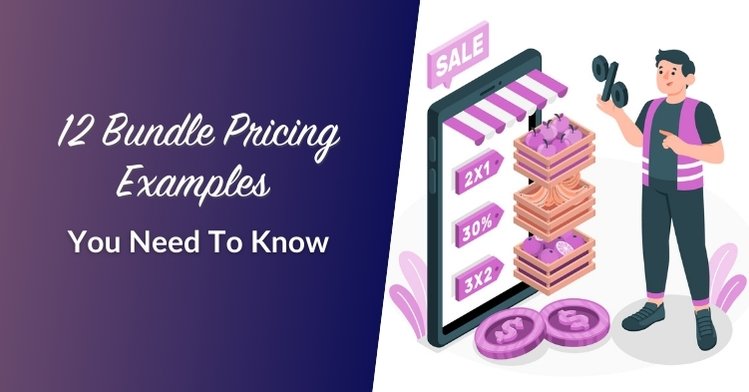
Utilizing Wholesale Suite
Also, if your business caters to both retail and wholesale items, it might be challenging to come up with different pricing strategies.
Do you need assistance in managing your wholesale business? Wholesale Suite is ready to help you grow your store. It is the number 1 WooCommerce wholesale plugin for B2B with over 450,000+ downloads globally.
Wholesale Suite is also created to seamlessly integrate with top WooCommerce extensions. Once installed, be more productive as you can: easily manage wholesale pricing across multiple levels by fixed price or percentage, control product visibility by user role, adhere to your country’s tax requirements, instruct wholesalers to utilize certain shipping gateways, and more.
To see what your store will look like after upgrading to Wholesale Suite, click here.
Frequently Asked Questions
What is a wholesale pricing model?
A wholesale pricing model is a strategy businesses use to set lower prices for bulk purchases. It allows resellers or retailers to buy products at a discounted rate, so they can mark them up for profit. Common models include tiered pricing, cost-plus pricing, and volume-based discounts.
You may also read about: How To Optimize Your Pricing Model Strategy To Grow Your Wholesale Business.
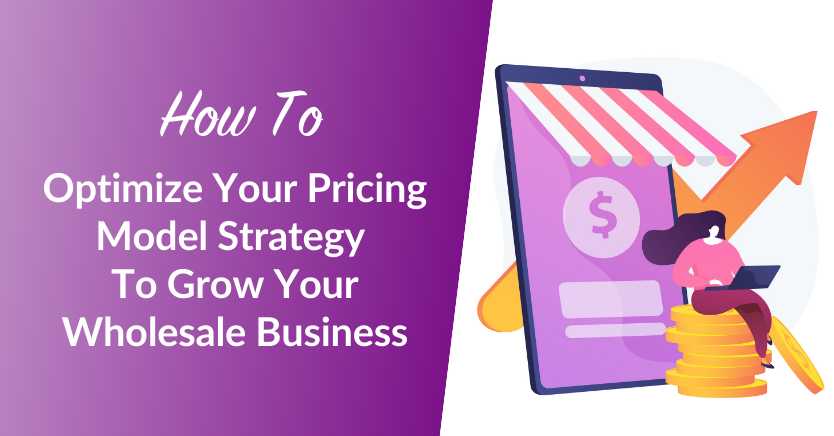
What is the best way to wholesale?
The best way to wholesale is to build strong relationships with buyers, offer competitive pricing, and maintain reliable product quality. Start by choosing a niche, pricing your products using effective wholesale pricing strategies, and using platforms like B2B marketplaces or your own website to reach retailers. Always focus on clear communication, consistent supply, and excellent customer service.
What are some wholesale items?
Popular wholesale items include clothing, electronics, beauty products, phone accessories, kitchenware, pet supplies, and snacks. Essentials like toiletries, cleaning supplies, and reusable containers also sell well in bulk.
Final Thoughts
Whichever of the wholesale pricing strategies you choose for your business, consider first the cost used in making the products. It is essential that you are familiar with the cost of your merchandise to lessen the probability of losses.
In this article, we discussed the top 10 pricing strategies that you need to know in wholesale:
- Demand pricing
- Competitive pricing
- Cost-plus pricing
- Penetration pricing
- Price skimming
- Economy pricing
- Psychological pricing
- Discount pricing
- Geographic pricing
- Price bundling
If you want to experiment with which one works for you and which ones to discard, consider our tip: the cost-plus pricing strategy is more effective in a contractual agreement, while a demand-based pricing strategy may cause customer dissatisfaction and threaten your customer loyalty.
Do you have any questions about wholesale pricing strategies? Let us know in the comments. Rooting for your success!

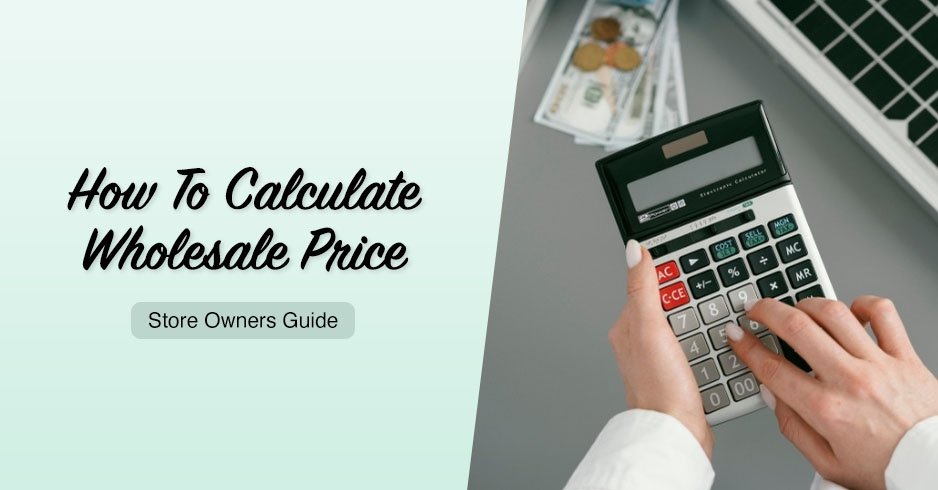
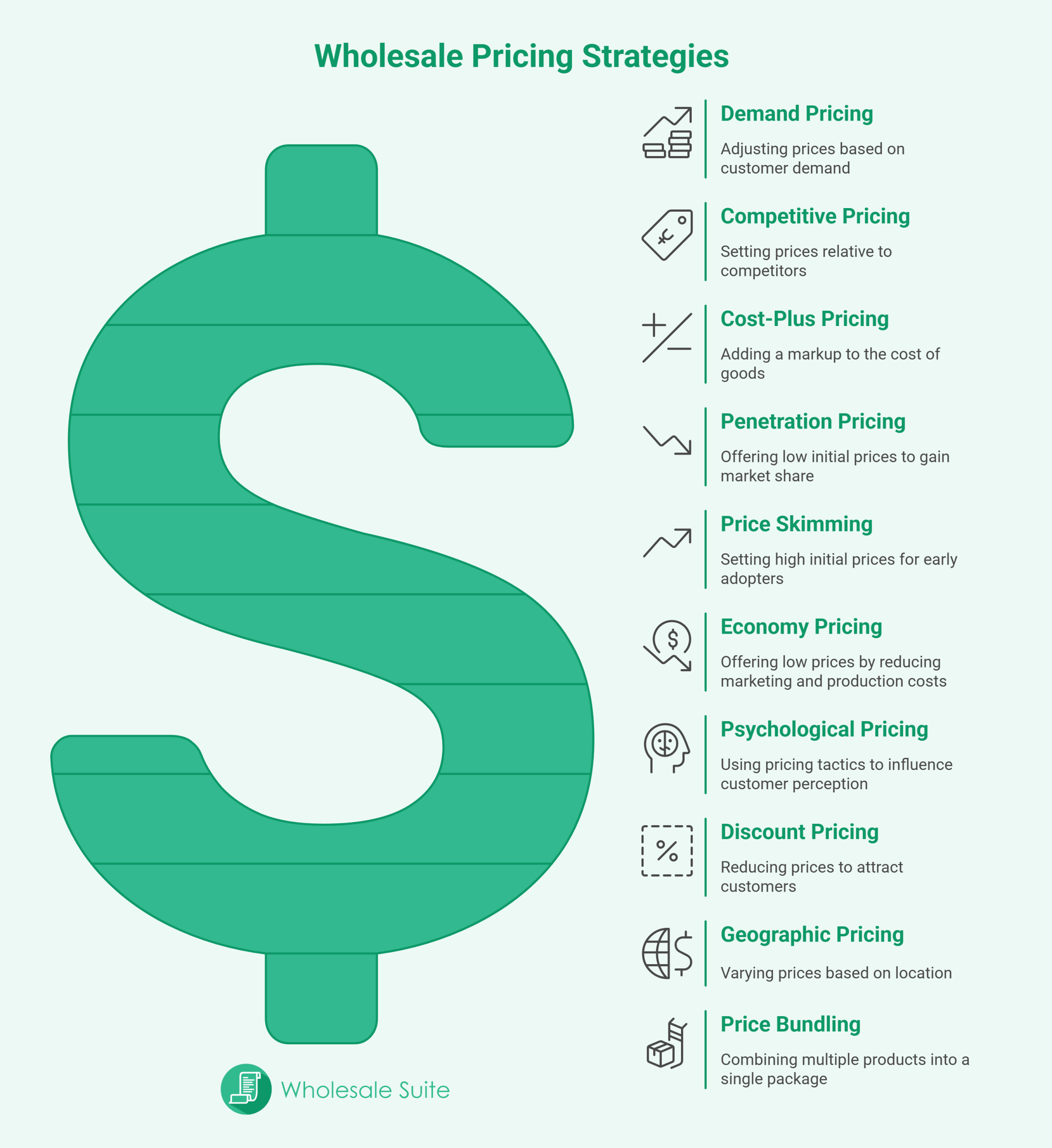
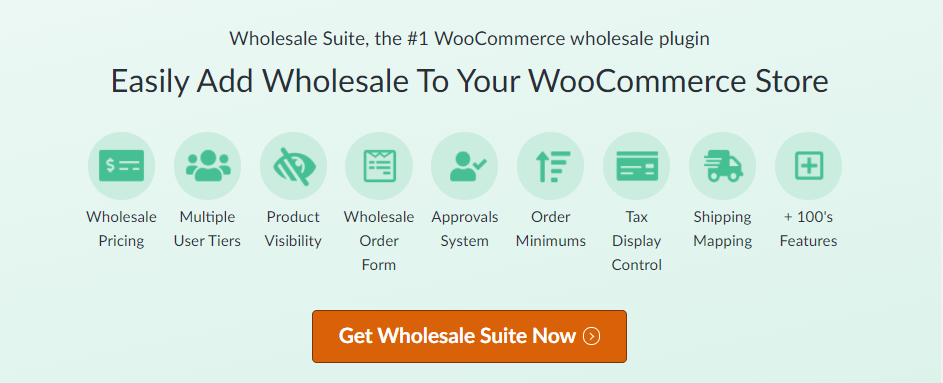


This is helpful
Yes
is any other pricing strategy is there in our market
Not yet ….. May be in future pricing technologies
Yes there are few more Pricing strategies in market and they are Premium Pricing, optional pricing,cost Based Pricing, product line pricing.
Easy language:) Thanks!
Do you have any suggestions on what type of pricing should we use for Renting Services or products?
Sorry Angela, rentals isn’t really my area of expertise, but you can probably try to apply many of the same principles above and adapt and test. Hope this helps!
Can you tell me which pricing strategy is best suited for retail wholesalers and b2b trading firm.
Hi, this is a pretty lucid writing about different pricing strategies in business.
So what would be the best pricing strategy for a new tech solution platform?
based on our business nature we can follow the pricing strategy which is suitable to us
Retailshops are stable
Insightful